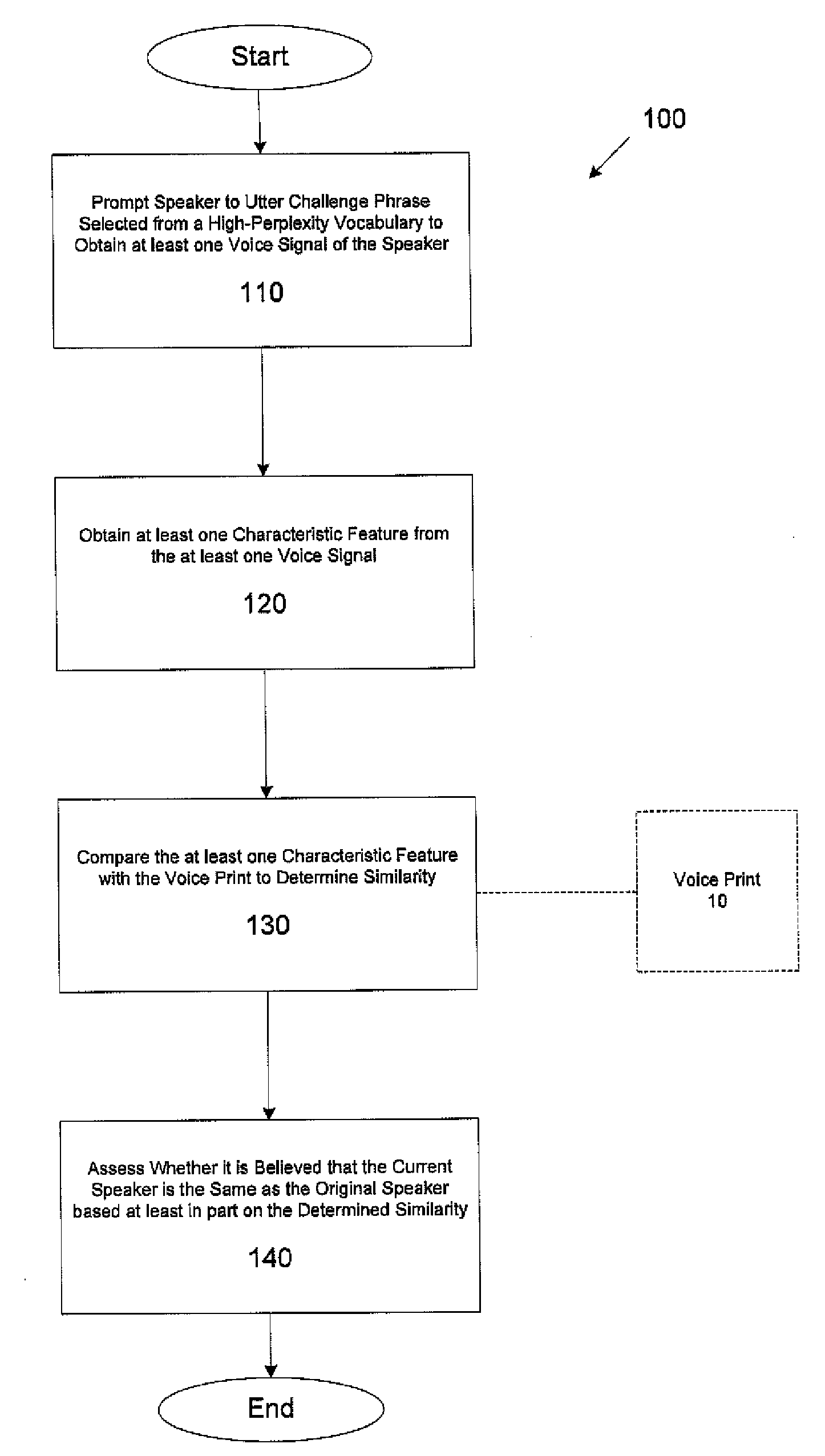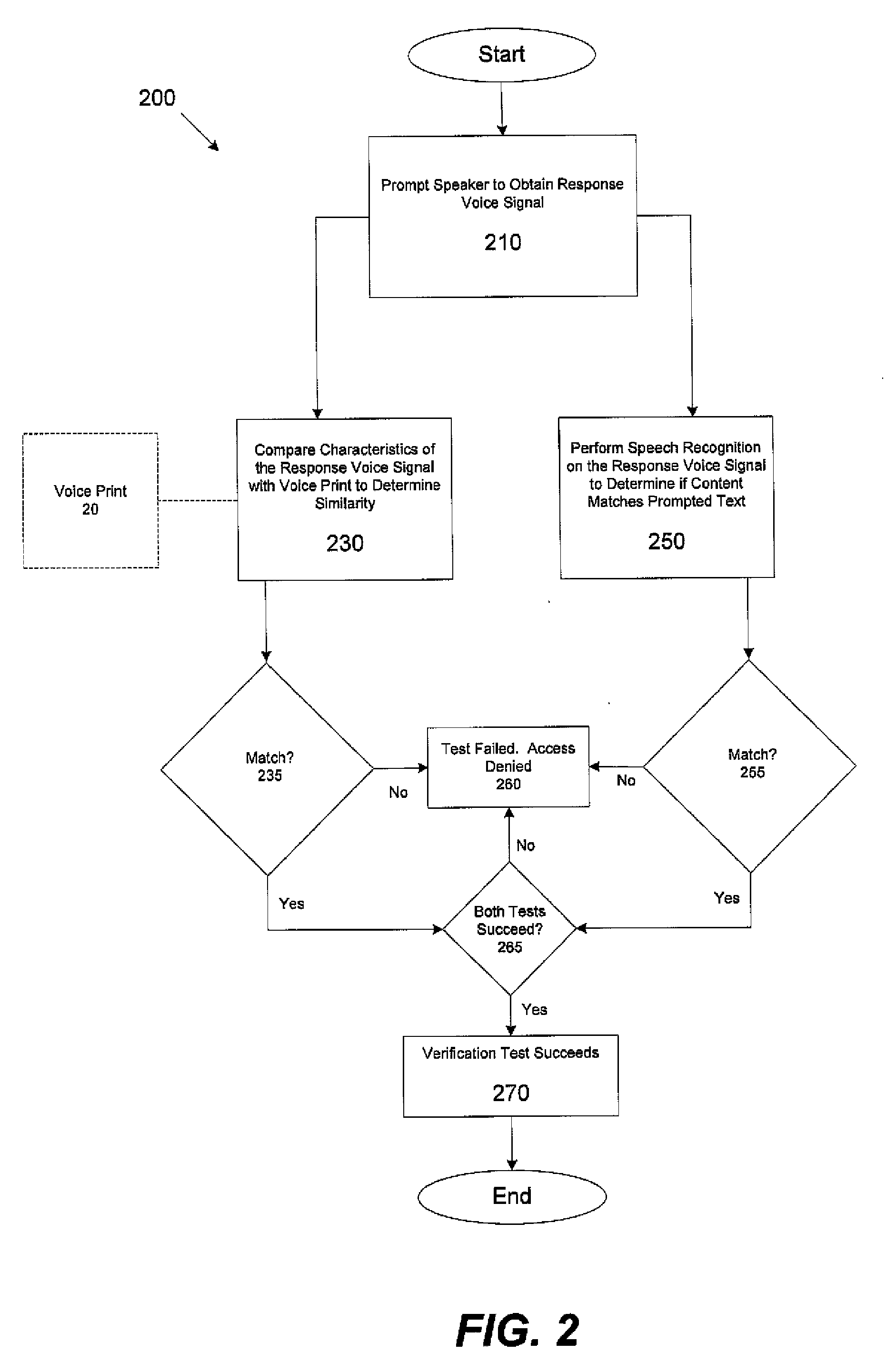Speaker verification methods and apparatus
a verification method and speaker technology, applied in the field of speaker verification, can solve the problems of ineffective efforts, playback attacks may present a substantial security risk to institutions employing conventional speaker verification systems, and the conventional system is still susceptible to playback attacks
- Summary
- Abstract
- Description
- Claims
- Application Information
AI Technical Summary
Benefits of technology
Problems solved by technology
Method used
Image
Examples
Embodiment Construction
[0021]As discussed above, conventional speaker verification systems may be vulnerable to playback attacks. Conventional approaches to preventing playback attacks such as the randomization technique discussed above may fail when recordings of the user are spliced together by a perpetrator of a playback attack. Applicant has recognized that this vulnerability may result, in part, due to the relatively simplistic vocabulary from which conventional systems select their challenge utterances. In particular, many conventional speaker verification systems select the words for the enrollment utterance and the words for the challenge utterance from the same vocabulary. For example, conventional systems may use a vocabulary that consists of the digits 0-9 from which both enrollment and challenge utterances are selected.
[0022]For example, during enrollment, a user may be prompted to utter the digits 0-9, perhaps multiple times, to obtain the voice signals from which the user's identifying voice...
PUM
 Login to View More
Login to View More Abstract
Description
Claims
Application Information
 Login to View More
Login to View More - R&D
- Intellectual Property
- Life Sciences
- Materials
- Tech Scout
- Unparalleled Data Quality
- Higher Quality Content
- 60% Fewer Hallucinations
Browse by: Latest US Patents, China's latest patents, Technical Efficacy Thesaurus, Application Domain, Technology Topic, Popular Technical Reports.
© 2025 PatSnap. All rights reserved.Legal|Privacy policy|Modern Slavery Act Transparency Statement|Sitemap|About US| Contact US: help@patsnap.com



